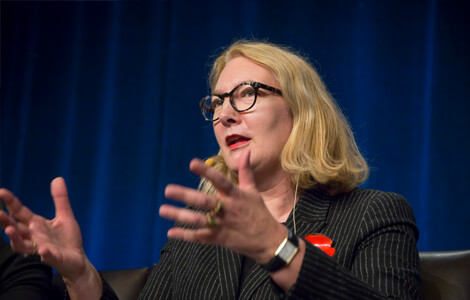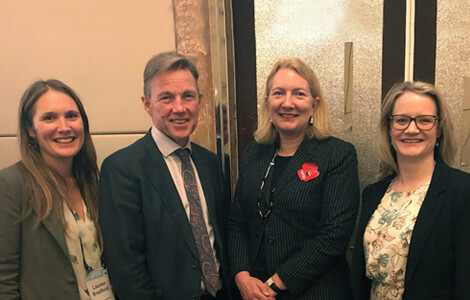Environmental giving
The Support Report highlights causes supported by both private and public ancillary funds, and lists environment at around $20 million, well behind welfare at $400 million and education at $230 million.
There is further potential for the philanthropic sector to support environmental causes. We need to conserve some of the largest and most important natural heritage spaces in the world and address the impacts of climate change on our economic, social wellbeing and our health.
I would encourage philanthropists who do not usually fund in the environment to think of environmental philanthropy as interrelated to the other cause areas we care about, such as economic opportunity, equitable access to services, and good health. Our own foundation has funded Doctors for the Environment, Farmers for Climate Action, and Brotherhood of St Laurence for an energy efficient rental housing project for low income families.

CEO Catherine Brown shares insights during the State of the Sector session at this year's Philanthropy Australia National Conference.
Public ancillary funds
The Support Report highlighted the growth potential of public ancillary funds as mini PAFs. While public ancillary funds can be established in various ways, the potential of community foundations in Australia is more important and untapped.
Canada is a shining example for community philanthropy. There are now 191 community foundations across the country stewarding assets over $6 billion. During Canada’s 150th anniversary, community foundations participated in a national grants program in partnership with the Canadian government. In Australia, we have 38 community foundations which grant at least $21 million annually within their communities and hold assets over $350 million.
Evidence-based philanthropy
Community foundations hold and develop community knowledge. The Vital Signs program initiated by Toronto Community Foundation uses evidence from well-respected sources to map a city or region’s things to improve and things to celebrate.
Undertaking Vital Signs has a direct impact on setting priorities in funding. Sydney Community Foundation has recently completed their third Vital Signs study (Portrait 3) which is informing their long-term work with women in western Sydney.
Our own 2017 Greater Melbourne Vital Signs Report highlighted new trends:
- an increase in older women couch surfing due to homelessness of 83% since 2012
- youth unemployment at 13.5%, plus more underemployed
- discrimination on the basis of skin colour, ethnic origin or religion has increased to 20%, from 15% in 2015. (Monash Scanlon Index)
It is this evidence that has now directed the Foundation to undertake both proactive and responsive granting in these areas.

Sustainable Development Goals & Philanthropy Session Panel (L-R): Lauren Bradford, Professor John Thwaites, Catherine Brown and Kylie Porter.
Impact
The Giving Australia 2016 report highlighted impact or ‘making a difference’ as one of the key themes. Having a deeper understanding of the issues we fund, the theory of change being applied and the proposed outcomes means we can better monitor the impact we and our grant partners are having – both through quantitative data and also through stories.
Greater impact can be achieved through building new partnerships and collaboration across sectors, creating leverage to achieve greater impact – this is blossoming within the Australian philanthropic sector.
Collective Giving
Another emerging area of growth is collective giving, sometimes described alongside community foundations as the democratisation of philanthropy. This was also observed in the Giving Australia 2016 report.
Community foundations can be well placed to host and initiate networks of donors to work together on issues of shared interest. A lot of learning about community needs and philanthropic practice also takes place. We are proud to host Melbourne Women’s Fund and Impact100 Melbourne, as well as 11 community funds with local government advisory groups, and several small Hive donor groups.
Greater cultural diversity
We need to encourage greater cultural diversity within Australian philanthropy. We published Asian Australian Diaspora Philanthropy authored by Prof John Fitzgerald and Wesa Chau, which reported the potential to acknowledge, encourage and integrate giving from our Asian diaspora communities.
Given that we are proud of our Australian multicultural society this is an area that foundations and charities could reflect upon further, especially in relation to Board representation.
Is philanthropy maximising its unique space in Australian society?
Prof Diana Leat and Dr Helmut Anheier’s forward looking book, From Charity to Creativity, published in 2002 is a source of inspiration.
When we suggest that foundations [of the 21st century] should be creative we mean that they should provide a space for alternative thinking, voices and practices…They can become the intellectually active, independent and informed institutions that push innovation and social justice in modern societies. But it is a role that requires courage and long-term commitment. (ibid, p10)
I am confident that Australian philanthropy is stepping up to this challenge.
Catherine Brown
Chief Executive Officer